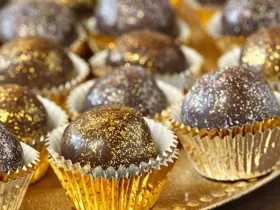1. Why Cast Iron Cookware is a Must-Have for Every Kitchen
When it comes to cookware, cast iron is often hailed as a kitchen essential, and for good reason. The durability, versatility, and unique properties of cast iron make it a must-have for every home cook. But what makes cast iron so special? Let’s explore the history, benefits, and debunk some common misconceptions about this beloved cookware.
1.1 The History and Origins of Cast Iron Cookware
Cast iron cookware has a rich history that dates back centuries. The ancient Chinese were the pioneers of cast iron, using it for various purposes, including cooking. It wasn’t until the 18th century that cast iron cookware gained popularity in Europe and North America. The Industrial Revolution further revolutionized the production of cast iron cookware, making it more accessible to the masses.
Today, cast iron cookware is cherished for its ability to retain and distribute heat evenly, making it ideal for slow cooking and searing. Its durability is unmatched, with many cast iron pots and pans being passed down through generations.
1.2 The Unique Benefits and Properties of Cast Iron
One of the primary reasons why cast iron cookware is a staple in many kitchens is its exceptional heat retention. Cast iron can hold heat for an extended period, allowing for even cooking over long periods. This property also makes it perfect for serving dishes that need to stay warm.
Additionally, cast iron has natural non-stick properties when properly seasoned. The seasoning process involves coating the cookware with a layer of oil and heating it, which creates a smooth and naturally non-stick surface. With proper care, your cast iron cookware will develop a beautiful, seasoned patina that enhances its cooking performance.
Another advantage of cast iron is its versatility. It can be used on various heat sources, including stovetops, ovens, and even open fires. From frying and baking to grilling and braising, cast iron can handle it all.
1.3 Debunking Common Myths and Misconceptions about Cast Iron
Despite its many benefits, cast iron cookware has its fair share of myths and misconceptions. Let’s debunk some of the most common ones:
Myth #1: Cast iron is difficult to maintain and clean. While cast iron does require some care, it is not as high-maintenance as it may seem. Proper cleaning and seasoning will keep your cast iron cookware in excellent condition. Avoid using soap or harsh detergents, as they can strip away the seasoning. Instead, use a stiff brush or scrubber to remove food particles, rinse with hot water, and dry thoroughly.
Myth #2: Acidic foods should not be cooked in cast iron. While it is true that acidic foods can react with cast iron, causing a metallic taste, a well-seasoned cast iron pan can handle acidic ingredients without any issues. As long as your cookware is properly seasoned and maintained, you can cook anything from tomato-based sauces to citrus-infused dishes in your cast iron.
Myth #3: Cast iron is only suitable for heavy-duty cooking. While cast iron excels at searing steaks and braising tough cuts of meat, it is also incredibly versatile for everyday cooking. From eggs and pancakes to stir-fries and stews, cast iron provides excellent heat distribution, making it perfect for a wide range of dishes.
2. Essential Tips for Caring and Maintaining Your Cast Iron Cookware
Now that we understand why cast iron is a must-have in every kitchen let’s explore how to care for and maintain your cast iron cookware to ensure its longevity and optimal performance.
2.1 Seasoning Cast Iron: The Secrets to a Perfect Non-Stick Surface
Seasoning is a crucial step in maintaining and enhancing the non-stick properties of your cast iron cookware. Here’s how to do it:
- Start with a freshly cleaned and thoroughly dried cast iron pan.
- Apply a thin layer of a high-smoke point oil (such as vegetable oil or flaxseed oil) to the entire surface of the pan, including the handle and exterior.
- Use a paper towel to remove any excess oil and ensure an even coating.
- Place the pan upside down in an oven preheated to 400°F (200°C).
- Bake the pan for one hour, then turn off the oven and allow the pan to cool completely in the oven.
- Repeat the process if desired, to build up a more robust seasoning.
Remember, the more you use and maintain your cast iron cookware, the better the seasoning will become over time.
2.2 Cleaning and Storing Cast Iron: Dos and Don’ts
Proper cleaning and storage are crucial to prevent rusting and maintain the seasoning of your cast iron cookware. Here are some dos and don’ts:
Do:
– Clean your cast iron while it is still warm using hot water and a stiff brush or scrubber.
– Dry your cast iron thoroughly with a towel or by placing it on a stovetop over low heat.
– Apply a thin layer of oil after cleaning to prevent rusting.
– Store your cast iron in a dry place, preferably with a paper towel or cloth to absorb any moisture.
Don’t:
– Use soap or harsh detergents when cleaning cast iron, as they can strip away the seasoning.
– Soak your cast iron in water or leave it wet for prolonged periods.
– Store your cast iron cookware with the lids on to allow proper air circulation.
2.3 Restoring and Reviving Old or Rusty Cast Iron Pieces
If you come across a neglected or rusty cast iron pan at a flea market or in your own kitchen, don’t fret. With some time and effort, you can restore it to its former glory. Here’s how:
- Scrub the pan thoroughly with hot water and a stiff brush to remove any rust or food debris.
- If necessary, use a small amount of mild dish soap to remove stubborn stains.
- Dry the pan completely with a towel.
- Apply a thin layer of oil to all surfaces of the pan to prevent further rusting.
- Place the pan upside down in an oven preheated to 350°F (175°C) and bake for one hour.
- Allow the pan to cool in the oven before using or storing it.
With proper care and maintenance, your restored cast iron pan will be as good as new.
3. Mastering Cooking Techniques with Cast Iron
Now that you have your well-seasoned cast iron cookware ready to go, let’s explore some essential cooking techniques that will help you maximize its potential.
3.1 Achieving the Perfect Sear: High Heat Cooking with Cast Iron
Cast iron excels at high-heat cooking, making it the perfect tool for achieving that coveted caramelized crust on meats and other ingredients. Here are some tips for achieving the perfect sear:
– Preheat your cast iron pan for a few minutes before adding any ingredients.
– Use a high-smoke point oil like canola or peanut oil, as they can withstand the heat.
– Pat dry your protein before adding it to the hot pan to ensure a good sear.
– Avoid overcrowding the pan, as it can lower the temperature and prevent a proper sear.
– Let the ingredients develop a deep golden-brown crust before flipping or stirring.
3.2 One-Pan Wonder: One-Dish Recipes Ideal for Cast Iron
One of the many advantages of cast iron cookware is its ability to transition effortlessly from stovetop to oven. This feature makes it ideal for one-dish recipes that require both stovetop searing and oven finishing. Here are some ideas to get you started:
– Skillet chicken with vegetables
– Sausage and potatoes
– Meaty lasagna
– Vegetarian frittata
These one-pan wonders will save you time and effort without compromising on flavor.
3.3 Baking to Perfection: Using Cast Iron for Bread and Desserts
Cast iron is not just for savory dishes. It can also elevate your baking game. The even heat distribution of cast iron makes it ideal for baking bread and desserts. Here are a few ideas to inspire you:
– Rustic artisan bread
– Skillet cornbread
– Apple crisp
– Berry cobbler
Experiment with different recipes, and you’ll be amazed at the delicious results you can achieve with your cast iron pans.
4. Inspiring Recipes to Elevate Your Cast Iron Cooking
Now that you are well-versed in the benefits and proper use of cast iron cookware, it’s time to put your skills to the test with some delicious recipes. Here are a few to get you started:
4.1 Classic Comfort: Traditional Cast Iron Recipes with a Twist
– Cast iron skillet mac and cheese
– Cast iron skillet pizza
– Southern-style buttermilk biscuits
– Dutch baby pancake with seasonal fruits
4.2 International Flavors: Exploring World Cuisine with Cast Iron
– Spanish paella
– Indian butter chicken
– Thai pineapple fried rice
– Mexican beef fajitas
4.3 Unexpected Favorites: Surprising Dishes You Didn’t Know You Could Cook in Cast Iron
– Cast iron skillet chocolate chip cookies
– Cast iron skillet lasagna
– Cast iron skillet shrimp scampi
– Cast iron skillet apple pie
These recipes are just a starting point. Get creative and experiment with your favorite ingredients to create memorable meals using your cast iron cookware.
With this essential guide to cast iron cookware, you are ready to embark on a culinary adventure. From caring for your cast iron to mastering various cooking techniques and trying out delicious recipes, your cast iron cookware will become a cherished kitchen companion that lasts a lifetime.
FAQ
Question: Why is cast iron cookware considered a must-have for every kitchen? Answer: Cast iron cookware is durable, versatile, and has excellent heat retention.
Question: What are the unique benefits and properties of cast iron? Answer: Cast iron has exceptional heat retention, natural non-stick properties when properly seasoned, and can be used on various heat sources.
Question: What are some common myths and misconceptions about cast iron? Answer: Some common myths include difficulty in cleaning, unsuitability for acidic foods, and limited use for heavy-duty cooking.
Question: How do I season my cast iron cookware? Answer: To season cast iron, apply a thin layer of oil and bake it in the oven.
Question: How do I clean and store my cast iron cookware? Answer: Clean cast iron with hot water and a brush, and store it in a dry place with a thin layer of oil.
Question: How can I restore rusty cast iron? Answer: Scrub, dry, and apply oil to rusty cast iron before baking it in the oven.
Question: What are some cooking techniques that work well with cast iron? Answer: Cast iron is great for achieving a perfect sear, one-dish recipes, and baking bread and desserts.
Question: What are some recipes that can be made using cast iron? Answer: Recipes that can be made using cast iron include classic comfort dishes, international flavors, and unexpected favorites.
Useful Resources:
- Food & Wine – A website offering a wide range of recipes and articles about cooking, including resources on cast iron cookware.
- Epicurious – A comprehensive cooking website with recipes, cooking techniques, and tips, including information on using and caring for cast iron.
- Serious Eats – A popular food blog that provides in-depth articles, recipes, and advice on various cooking topics, including cast iron cookware.
- Cook’s Illustrated – A trusted source for expert advice and recipes, including information on cast iron cooking and maintenance.
- America’s Test Kitchen – A resource for reliable recipes, product reviews, and cooking techniques, including information on cast iron cookware.
- The Spruce Eats – An online food and cooking resource with a wide variety of recipes and articles, including guides on cast iron cookware.
- The Kitchn – A popular cooking and home improvement website with recipes, tips, and advice on various cooking methods, including cast iron cooking.
- Bon Appétit – A renowned cooking magazine and website with a diverse range of recipes, cooking techniques, and tips, including information on cast iron cookware.











